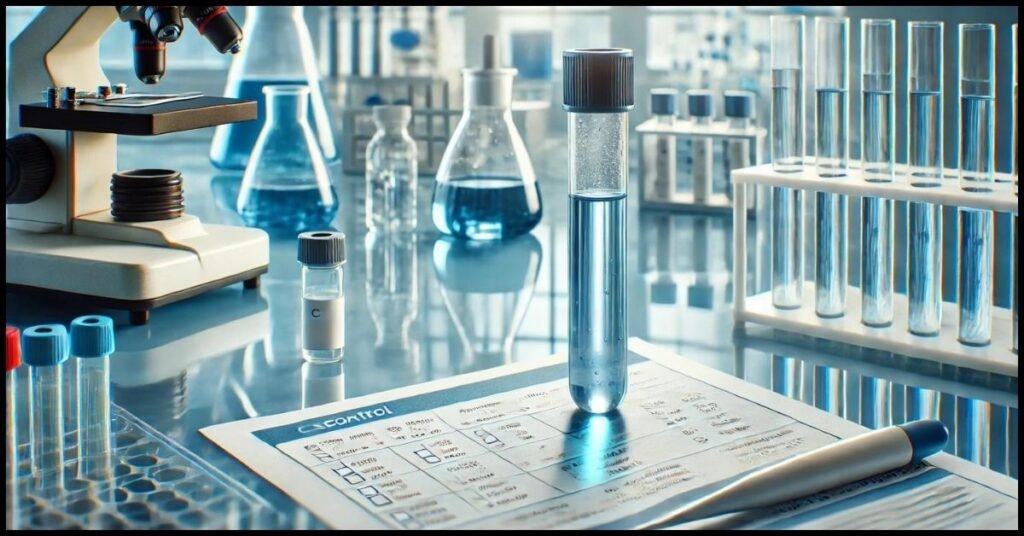What to Do When if Hema Gg Control Doesn’t turn Blue: Expert Advice

if Hema Gg Control Doesn't turn Blue
The Hema FG control is essential in diagnostic tests, particularly in hematology. It helps ensure the accuracy and reliability of the test results by turning blue when the control sample is functioning correctly. But what happens when the Hema FG control doesn’t turn blue as expected? This can cause concern, as it may indicate an issue with the control process or the reagent quality, potentially leading to incorrect test results.
In this article, we’ll explore why the Hema FG control might not turn blue, along with troubleshooting steps to resolve the issue. Let’s dive into the causes, solutions, and expert advice for handling this situation.
Understanding the if Hema Gg Control Doesn’t turn Blue and Its Function
The Hema FG control is a quality control reagent used in hematology testing to ensure the test systems work correctly. It typically turns blue when the control sample is processed, indicating that the reagents are functioning as expected and the test can provide accurate results. It signals that something may have gone wrong when it doesn’t turn blue.
What Does the Blue Color Indicate?
The blue color change in the Hema FG control is crucial because it indicates that the reagent has adequately interacted with the control sample. Without this color change, there’s no assurance that the test is valid, making it necessary to investigate the cause and take corrective actions.
Why Is Hema FG Control Important in Testing?
In laboratory settings, accuracy is of utmost importance. The Hema FG control is a verification step, ensuring the tests yield reliable and precise results. If the control doesn’t work, any results generated could be flawed, potentially leading to incorrect diagnoses or follow-up tests.
Common Reasons Why Hema FG Control Doesn’t Turn Blue
If the Hema FG control doesn’t turn blue, several potential issues could be at play. Below are the most common reasons that might be causing this problem:
Expired or Contaminated Reagents
One of the most common reasons the Hema FG control fails to turn blue is the use of expired or contaminated reagents. Reagents have a limited shelf life, and using them past their expiration date can result in chemical degradation, which prevents the expected reactions from occurring.
Solution: Always check the expiration date of your reagents before use. If the reagents are expired, replace them with fresh ones and retry the test.
Improper Storage Conditions
Another potential issue is improper storage of the reagents. Reagents exposed to inappropriate temperatures or light conditions can degrade, affecting their ability to produce accurate results.
Solution: Ensure all reagents are stored according to the manufacturer’s guidelines. Typically, this involves keeping them in a cool, dry place, away from direct sunlight.
Incorrect Test Procedure
Sometimes, human error can cause the issue. If the test procedure isn’t followed correctly—such as incorrect reagent amounts or improper timing—it can prevent the control from turning blue.
Solution: Double-check the test procedure and ensure that every step is followed precisely, from measuring reagents to incubation times.
Faulty Test Equipment
Faulty or poorly calibrated equipment can also cause the Hema FG control to not turn blue. Issues with pipettes, incubators, or analyzers may also interfere with the test process.
Solution: Regularly maintain and calibrate lab equipment to ensure it functions correctly. Replace any equipment that shows signs of wear or malfunction.
Troubleshooting Steps to Fix Hema FG Control Issues
When faced with the issue of the Hema FG control not turning blue, following a systematic troubleshooting approach can help resolve the problem efficiently. Here’s a step-by-step troubleshooting guide:
Check the Expiration Date of Reagents
The first step is to verify that the reagents you’re using are still within their expiration date. If expired, discard them and use fresh reagents.
Review Storage Conditions
Ensure that the reagents have been stored according to the recommended conditions. They may no longer be effective if exposed to extreme temperatures or light.
Verify the Test Procedure
Carefully review the test procedure to ensure all steps are followed correctly. This includes measuring the correct amounts of reagents, adhering to incubation times, and using the appropriate equipment.
Inspect Equipment for Malfunctions
Check the equipment you’re using for signs of malfunction. This includes ensuring that pipettes dispense accurately and that temperature-dependent equipment is calibrated correctly.
Run a Control Test with Fresh Reagents
To isolate the issue, run a control test using a fresh set of reagents. If the control turns blue with the new reagents, the problem likely lies with the initial batch of chemicals.
Best Practices to Prevent Hema FG Control Failures
To avoid facing the issue of the Hema FG control not turning blue in the future, implementing these best practices can help maintain the integrity of your tests:
Regularly Calibrate Equipment
Ensure that all laboratory equipment is regularly serviced and calibrated. Faulty equipment can lead to inaccurate test results, so keeping it in top working condition is crucial.
Store Reagents Properly
Proper storage of reagents is critical to maintaining their efficacy. Always store reagents according to the manufacturer’s recommendations and monitor storage conditions regularly.
Follow the Test Procedure Diligently
Human error is a common cause of issues during testing. Always follow the test procedure to avoid mistakes that can lead to faulty results.
Keep Backup Reagents Available
Having backup reagents on hand can help prevent delays if a batch of reagents is faulty. This ensures that testing can continue smoothly without interruptions.
FAQs
Why does the Hema FG control need to turn blue?
The blue color indicates that the reagents are functioning correctly, ensuring the accuracy of the test.
What should I do if my reagents are expired?
If your reagents are expired, discard them and replace them with fresh ones to ensure accurate results.
How can I prevent the Hema FG control from failing in the future?
Regular equipment maintenance, proper reagent storage, and strict adherence to test procedures can prevent issues with the control.
Is the issue with the equipment and not the reagents?
Yes, faulty equipment or improper calibration can affect the test results. It’s essential to check and maintain your lab equipment regularly.
Can contaminated reagents cause the control not to turn blue?
Contaminated reagents can fail to produce the expected reaction, leading to a failed control test.
What should I do if I need help with the troubleshooting steps?
If none of the steps resolve the issue, consider contacting the reagent manufacturer or a technical expert for further assistance.
Conclusion
When the Hema FG control doesn’t turn blue, it’s essential to approach the issue systematically to find the root cause and resolve it. Whether it’s expired reagents, improper storage, or faulty equipment, understanding the potential problems and following a troubleshooting process can help get your tests back on track. By implementing best practices, such as proper storage, equipment maintenance, and adherence to procedures, you can prevent these problems in the future.






